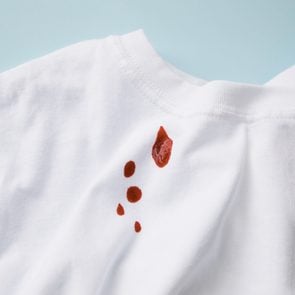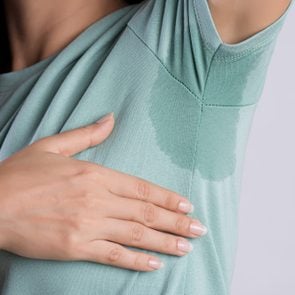How to Remove Even the Toughest Turmeric Stains, According to Experts
Updated: Apr. 18, 2024
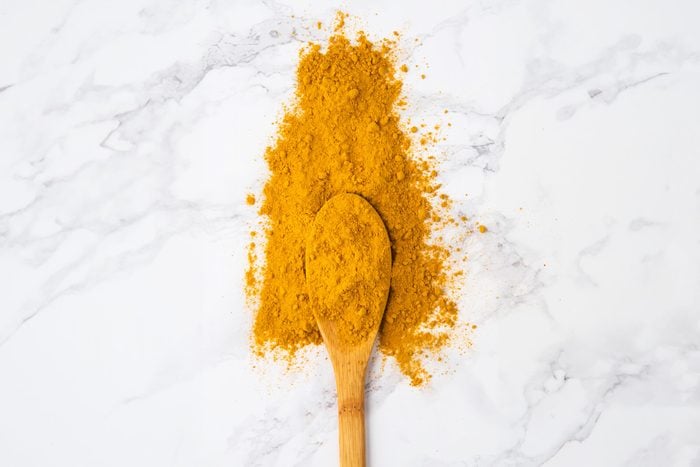
Do you love Indian dishes and all things curry? You’ll definitely want this information on how to remove turmeric stains from your clothing and your home.
True story: The other night, as I was going through my cleaning experts’ tips for how to remove turmeric stains, I paused for dinner with my husband. We ordered curry, I was wearing a white shirt, and I bet you won’t be surprised to hear what happened next! I looked down after our meal to discover a few golden spots had seemingly jumped from my plate onto my top. Great.
While turmeric is certainly a superstar in the spice cabinet, it is more like a nemesis when it comes to cleanup. This vibrant spice, which is part of the ginger family, has been used for centuries as both a flavor enhancer and a textile dye. So once it ends up on your clothing, carpets, countertops or even cuticles, it will likely leave its mark.
To ensure that mark isn’t permanent, I spoke with a scientist and product expert at Proctor & Gamble, a third-generation janitor, a natural-cleaning expert and a carpet specialist. Act fast and follow our expert-approved methods for cleaning whatever turmeric touches, and that stain will be a distant memory in minutes. Even better? When you know how to remove stains the right way, a little spill won’t feel like such a big deal.
Get Reader’s Digest’s Read Up newsletter for more cleaning, tech, travel, humor and fun facts all week long.
About the experts
Reviewed for accuracy by: Ann Russell, TikTok’s “cleaning auntie” and the author of How to Clean Everything. |
How to remove turmeric stains from clothes
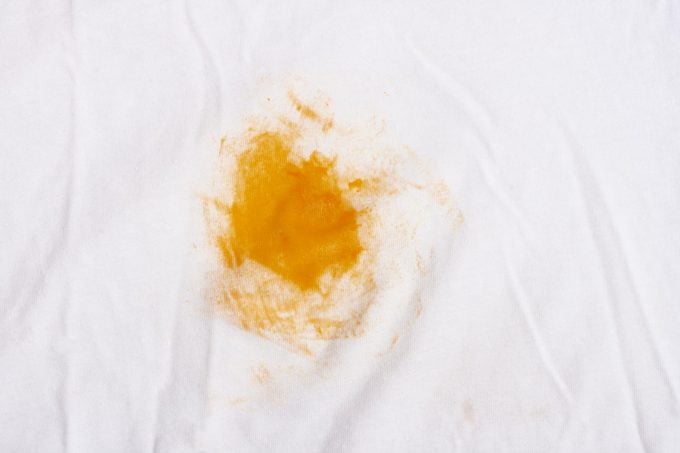
A little dish soap goes a long way when it comes to removing turmeric stains. “The surfactants in dish soaps will help to remove greasy stains on clothing the same way they remove grease from dishes,” says Morgan Eberhard, Dawn’s senior scientist. “For non-greasy stains, look for a dish soap that contains a vegetable-based chelating agent, like tetrasodium glutamate diacetate, which will bond with the minerals and metal ions in the stain and make them easier to remove.”
That said, if your garment is delicate or dry-clean only, it’s best to send it to the pros for proper care. If not, follow these steps for at-home stain removal.
Supplies you’ll need
- Dish soap or Dawn Powerwash
- Soft-bristled toothbrush
- Laundry detergent
Step 1: Pre-treat the stain with dish soap
Apply a small drop of dish soap or one to two sprays of Dawn Powerwash (Eberhard’s preference) directly to the fabric. Rub it into the stain with your fingers or a soft-bristled toothbrush. Don’t wet the fabric before applying it, since that will dilute the cleaning ingredients, and you want them at full strength when dealing with turmeric stains.
Step 2: Rinse the stain
Allow the dish soap to sit for five minutes, then rinse with cold water until no more suds remain. If traces of discoloration are still present, repeat Steps 1 and 2.
Step 3: Launder the garment
Launder the garment as usual, according to the care label. If traces of discoloration are still present, repeat Steps 1–3 before drying.
Step 4: Air-dry the garment
Let your item air-dry rather than using your dryer. “Drying a stain will further set it into the fabric fibers,” warns Eberhard. Ideally, your stain will be out by now, but this is a fail-safe, since sometimes a spot might not be visible until the garment is fully dry.
Pro tip: Get to the stain as quickly as you can to make cleaning easier and more effective. That’s not to say a set-in stain will be impossible to remove—it will just take a little more time and elbow grease.
How to remove turmeric stains from dishes
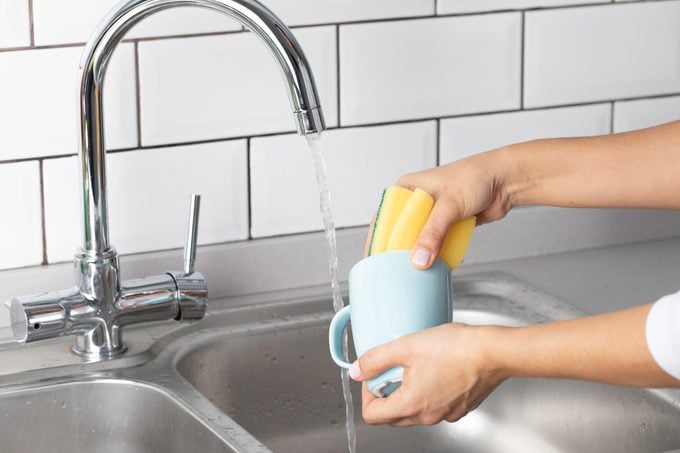
Have your dinner plates or food-storage containers absorbed the color from your meal? This tends to be more of a problem with porous materials like melamine, and stains can stubbornly stick after just 30 minutes to an hour. Natural-cleaning expert Becky Rapinchuk, founder of the popular website Clean Mama, recommends the following homemade paste to tackle this task.
Supplies you’ll need
- Water
- Baking soda
- Dish soap
- Sponge or cloth
Step 1: Make a paste
Rinse the item under hot water (which works better and in less time than cooler water, according to Rapinchuk) to clean off excess residue. Then make a paste of two parts baking soda to one part water; it should be the consistency of toothpaste. Use your fingers or a sponge to apply the paste to the stain.
Step 2: Scrub
Add a couple drops of dish soap to the area covered with the baking-soda paste. Scrub with a sponge or cloth. The baking soda is a gentle abrasive that should help lift the stain from the material, while the soap will help wipe it all clean.
Step 3: Rinse
Rinse away the paste with warm water.
Step 4: Repeat, as needed
If discoloration remains, repeat Steps 1–3.
How to remove turmeric stains from countertops
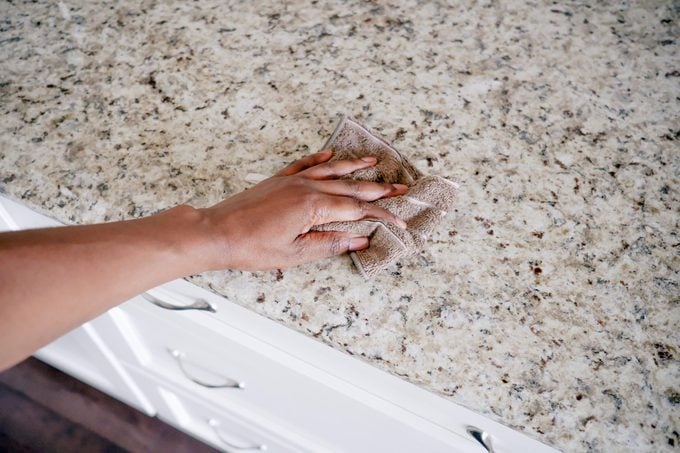
To remove turmeric stains from countertops, you’ll follow nearly the same steps as you would for discolored dishware. One caveat: Rapinchuk cautions that baking soda can potentially scratch marble, other natural stone and laminate. But she’s found that if the baking-soda paste is used in just the area where there’s discoloration, “the benefits of it removing the turmeric stain outweigh the ‘possibility’ of it scratching the surface.” Test the paste on an inconspicuous spot first if you’re worried.
Supplies you’ll need
- Water
- Baking soda
- Dish soap
- Nonabrasive sponge or cloth
Step 1: Make a paste
Using two parts baking soda to one part warm water, mix a paste that is similar in consistency to toothpaste. Apply it to the surface stain with a sponge or cloth, and let sit for 15 minutes to absorb the discoloration.
Step 2: Scrub
Apply a couple drops of dish soap on top of the paste, then scrub. Use a soft cloth or nonabrasive sponge to prevent further damage to the countertop.
Step 3: Rinse and repeat
Wipe up the paste with a damp cloth, and repeat the process as needed.
How to remove turmeric stains from carpet
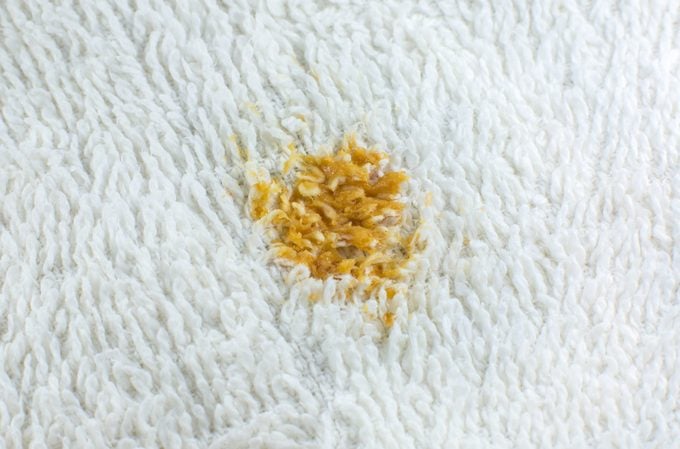
Stains on carpet can be extra difficult to handle because any cleaning solution inadvertently left behind can attract more dirt and discoloration. But even though turmeric is one of the hardest stains to remove, it doesn’t necessarily mean you should use more product, according to third-generation janitor Brandon Pleshek, founder of the website Clean That Up. Below, he shares his tried-and-true method for removing turmeric stains. As always, test your chosen cleaning method in an inconspicuous spot first to make sure it doesn’t negatively affect the fibers.
Supplies you’ll need
- Vacuum
- Paper towel
- White cloths
- 3% hydrogen peroxide in a spray bottle
- UV black light
- Pencils (for propping up the black light)
- White cloth
Step 1: Remove any solids or excess
Gently wipe away solids or spills with a paper towel or clean cloth, or vacuum up turmeric powder with the hose attachment. Be careful not to spread the stain.
Step 2: Saturate the stain
Spray the stain with enough hydrogen peroxide to saturate the fibers.
Step 3: Shine a UV black light on the affected area
Use a few pencils to prop a UV black light above the stain; you don’t want the light to sit directly on the carpet. Turn on the light for five minutes. UV light acts as a bleaching agent (think about a faded beach toy that’s been left out in the sun) and will lighten the discoloration from the turmeric.
Step 4: Assess the stain
Lift the UV light to assess the discoloration. If any remains, shine the light again over the area for two minutes at a time, gently agitating the carpet fibers between each session to ensure the light reaches down into the carpet. These short sessions will ensure that the turmeric is treated and the carpet fibers remain intact. Overusing the light could bleach the carpet as well.
Step 5: Remove moisture
Finally, use a white cloth to dab any remaining moisture from the carpet.
Pro tip: “Never scrub or rub a stained area [on carpet],” says Richard Turner, director of technical services and programs at The Carpet and Rug Institute. “This can cause damage to the carpet fibers and make the stain worse.”
How to remove turmeric stains from nails and skin
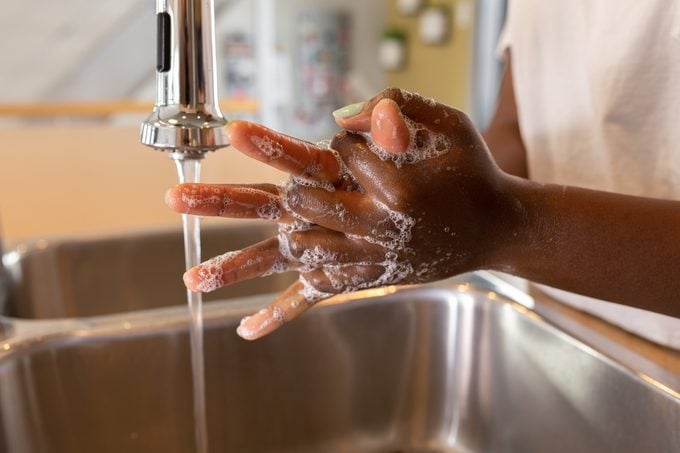
When cooking with turmeric, I typically notice that telltale discoloration on the tips of my fingers and around my fingernails. I used to hide my hands in my pockets and live with it for a few days while the stain wore off, but from now on, I’ll be using Rapinchuk’s method below!
Supplies you’ll need
- Rubbing alcohol
- Soft cloth or cotton pad
Step 1: Apply alcohol
Dip a cloth or cotton pad in rubbing alcohol, and rub it over the discolored area on your hands until the stain disappears. For particularly stubborn stains, you may need to use a fresh cloth or cotton pad to repeat the process.
Step 2: Wash hands
Add hand soap, wash and rinse.
FAQs
How do you remove turmeric stains without bleach?
In all the ways noted above! None of our experts recommended using bleach on turmeric stains. “Bleach can be corrosive,” Eberhard says, “which can damage some hard surfaces or cause irreversible damage to the color and fibers of fabrics.” Start with a gentler solution that can be just as effective at lifting a stain, while keeping your surfaces safe.
Does vinegar remove turmeric stains?
Along with the ingredients and products listed above, you can also employ vinegar when attempting to remove turmeric stains from clothing, upholstery and hard surfaces. Its acidic nature works well against tough stains, says Rapinchuk, and is just as effective as store-bought solutions. Just be wary of using it on natural stone, including marble or limestone, since the acidity could etch or dull the material.
Does toothpaste remove turmeric stains?
Plain old white toothpaste is essentially a baking-soda paste, so it can be used in a pinch to remove turmeric stains. Just make sure it’s the standard white variety, not the colored or gel formulas, which could actually tint the material even further.
What other products remove turmeric stains?
If you’re looking for store-bought options to have on hand in case of a future turmeric emergency, Pleshek suggests Tide Rescue for clothing and Bar Keepers Friend for dishes or countertops. The latter product, by the way, will also come in handy when cleaning copper pots and stainless-steel items.
If all else fails, the sun could be your savior. According to Pleshek, “sunlight acts as a natural bleach.” Put a little oxygen bleach on the stain, place the garment in direct sunlight for a few hours (and up to a full day), and let nature work its magic. Just be mindful that too much sun exposure could fade the original color of the item, so make sure to check it periodically.
Why trust us
At Reader’s Digest, we’re committed to producing high-quality content by writers with expertise and experience in their field, in consultation with relevant, qualified experts. For this piece, Stephanie Sisco tapped her experience as a longtime home and cleaning editor, and then Ann Russell, TikTok’s “cleaning auntie” and the author of How to Clean Everything, gave it a rigorous review to ensure that all information is accurate and offers the best possible advice to readers. We also relied on reputable primary sources, including cleaning and health experts and reputable organizations. We verified all facts and data and backed them with credible sourcing, and we will revisit them over time to ensure they remain accurate and up to date. Read more about our team, our contributors and our editorial policies.
Sources:
- Brittanica: “Turmeric”
- Morgan Eberhard, senior scientist and science educator at Dawn; email interview, Jan. 11, 2024
- Brandon Pleshek, cleaning professional and founder of Clean That Up; email interview, Jan. 18, 2024
- Becky Rapinchuk, founder of Clean Mama and author of four cleaning books; email interview, Jan. 10, 2024

